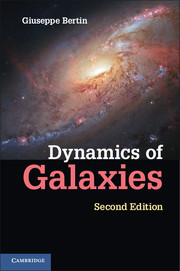Book contents
- Frontmatter
- Contents
- Preface to the Second Edition
- Preface to the First Edition, 2000
- Acknowledgments
- PART I Basic Phenomenology
- 1 Scales
- 2 Observational Windows
- 3 Classifications
- 4 Photometry, Kinematics, and Dark Matter
- 5 Basic Questions, Semiempirical Approach, and the Dynamical Window
- PART II Physical Models
- PART III Spiral Galaxies
- PART IV Elliptical Galaxies
- PART V In Perspective
- Bibliography
- Index of objects
- Index
5 - Basic Questions, Semiempirical Approach, and the Dynamical Window
from PART I - Basic Phenomenology
Published online by Cambridge University Press: 05 June 2014
- Frontmatter
- Contents
- Preface to the Second Edition
- Preface to the First Edition, 2000
- Acknowledgments
- PART I Basic Phenomenology
- 1 Scales
- 2 Observational Windows
- 3 Classifications
- 4 Photometry, Kinematics, and Dark Matter
- 5 Basic Questions, Semiempirical Approach, and the Dynamical Window
- PART II Physical Models
- PART III Spiral Galaxies
- PART IV Elliptical Galaxies
- PART V In Perspective
- Bibliography
- Index of objects
- Index
Summary
The discovery of dark halos, the spectroscopic evidence that elliptical galaxies are dominated by collisionless dynamics (which rules out the applicability of simple fluid models for their description) and the opening of new observational windows (especially in the near infrared) able to provide direct information on the underlying stellar mass distribution in galaxies have significantly changed, in the third quarter of last century, our perception of the internal structure of galaxies. As will be pointed out in general terms in Part II, the modeling tools and the theories developed to explain many interesting observations (from the study of global spiral and bar modes of galaxy disks to the construction of self-consistent anisotropic collisionless models to explain the universality of the luminosity profile of elliptical galaxies) present many analogies to parallel work in the physics of electromagnetic plasmas. At the frontier of current research in extragalactic astrophysics, the Hubble Space Telescope and new large telescopes from the ground are giving us a view of the early dynamical stages of galaxies, providing interesting insights into aspects of galactic formation and evolution, and, on the small scale for relatively nearby galaxies, are offering unprecedented accurate data on their structure and kinematics.
Within the same basic framework of dynamical studies, very different approaches can be taken. Dynamics is a powerful tool that allows us not only to interpret the data and to form a better picture of the internal structure of galaxies but also to develop and test physical scenarios. As such, its role is not limited to the descriptive stage. Two extremes are often taken in the study of the dynamics of galaxies.
- Type
- Chapter
- Information
- Dynamics of Galaxies , pp. 53 - 58Publisher: Cambridge University PressPrint publication year: 2014



